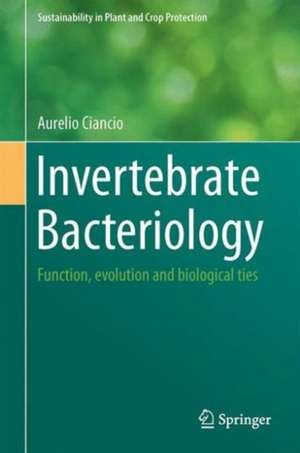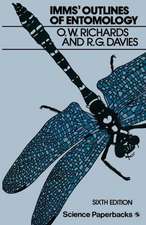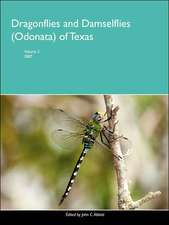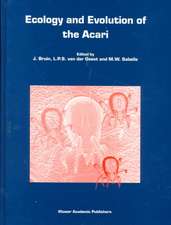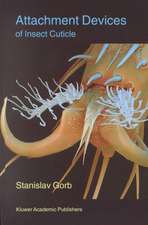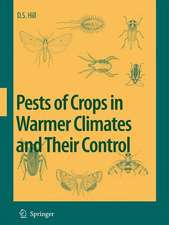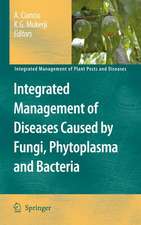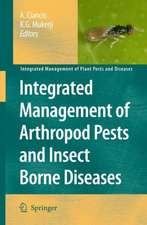Invertebrate Bacteriology: Function, Evolution and Biological Ties
Autor Aurelio Ciancioen Limba Engleză Hardback – 21 sep 2016
| Toate formatele și edițiile | Preț | Express |
|---|---|---|
| Paperback (1) | 789.13 lei 38-44 zile | |
| SPRINGER NETHERLANDS – 22 apr 2018 | 789.13 lei 38-44 zile | |
| Hardback (1) | 958.88 lei 3-5 săpt. | |
| SPRINGER NETHERLANDS – 21 sep 2016 | 958.88 lei 3-5 săpt. |
Preț: 958.88 lei
Preț vechi: 1169.36 lei
-18% Nou
Puncte Express: 1438
Preț estimativ în valută:
183.48€ • 192.08$ • 151.82£
183.48€ • 192.08$ • 151.82£
Carte disponibilă
Livrare economică 15-29 martie
Preluare comenzi: 021 569.72.76
Specificații
ISBN-13: 9789402408829
ISBN-10: 9402408827
Pagini: 353
Ilustrații: XII, 349 p. 45 illus., 25 illus. in color.
Dimensiuni: 155 x 235 x 24 mm
Greutate: 0.83 kg
Ediția:1st ed. 2016
Editura: SPRINGER NETHERLANDS
Colecția Springer
Locul publicării:Dordrecht, Netherlands
ISBN-10: 9402408827
Pagini: 353
Ilustrații: XII, 349 p. 45 illus., 25 illus. in color.
Dimensiuni: 155 x 235 x 24 mm
Greutate: 0.83 kg
Ediția:1st ed. 2016
Editura: SPRINGER NETHERLANDS
Colecția Springer
Locul publicării:Dordrecht, Netherlands
Cuprins
1 The Bacterial Cell.- 2 Bacteria and Eukaryotes Evolution.- 3 Symbiotic Relationships.- 4 Parasitic Endosymbionts.- 5 Travelling Bacteria: Vectors.- 6 Travelling Bacteria: Phoresy.- 7 Defense and Immune Systems.- 8 Horizontal Gene Transfer.- 9 The -omics race.- 10 Applications in Farming.- 11 Environmental Interactions.
Textul de pe ultima copertă
This compendium reviews different processes acting on bacterial groups that evolved one or more relationships with members of the most important invertebrate Phyla. Starting from principles of basic bacteriology the book provides data on bacteria interactions with pests, animal or human diseases. Being present in all environments, from deep see to crops, animals or plants, invertebrates represent the most significant and ancient fraction of the eukaryotic biomass on earth. Their evolutive adaptations and links with bacteria, established over time scales of ages, range from vectored diseases to speciation, within a wide range of environmental niches and biocenosis, including oceanic hydrothermal vents. Main functional processes include pathogenicity, parasitism, transmission, immunity, symbiosis and speciation. A review about recent advances achieved in these research topics is given, focussing on one or more aspects concerning significant evolutive paths of bacteria and underlying functional links. Rather than proceeding through the order and structure of taxonomies, the volume is organized by processes, examining their functional role in different lineages, including but not limited to insects or nematodes. Processes involved in parasitism focus, at a finer level, on examples from many taxa. Molecular aspects underpinning these and other functional processes include the effects of horizontal gene transfer, the mechanisms active in immune defense and vectoring, and the antibacterial peptides. Finally, the effects of climate warming, biological invasions and agriculture are examined, with particular attention to farming and environment.
Caracteristici
The volume provides basic bacteriology principles before affording the description of the bacteria and invertebrates relationships, with up-to-date molecular and biological informations One chapter describes the impact and advantages derivable by recent -omic technologies
